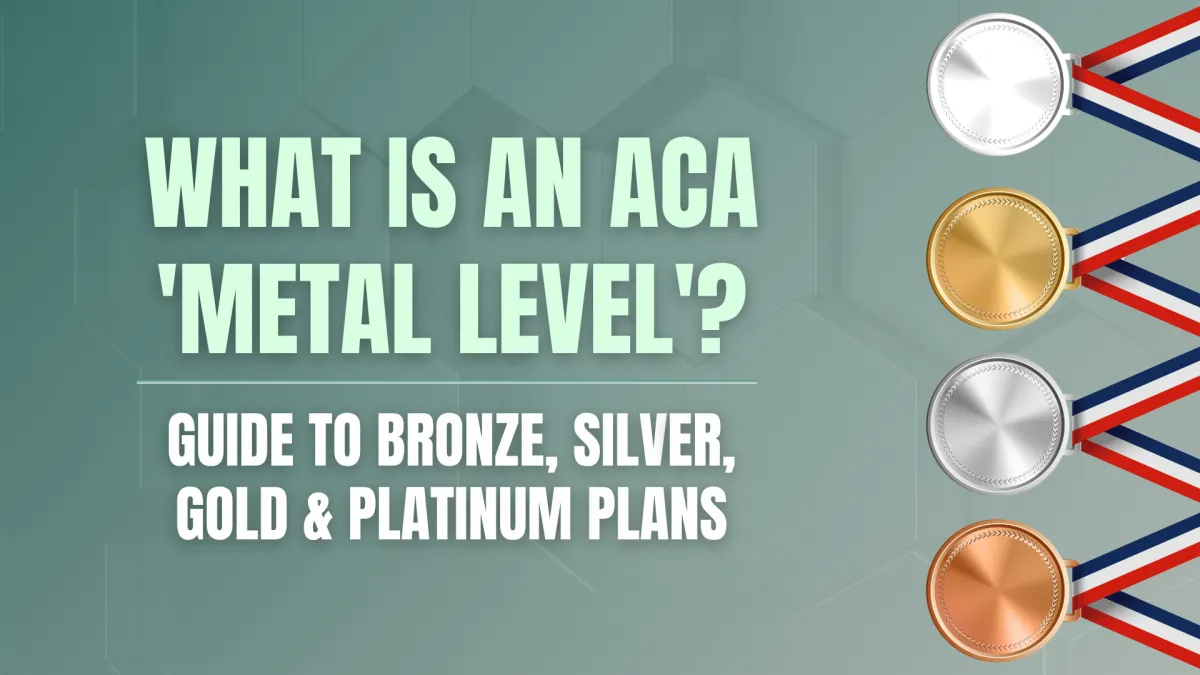Welcome to the HBEC Blog.
We provide clear answers and helpful insights for your questions about ACA, Medicare, Dental & Vision, and Final Expense. Our goal is to give you the understanding you need to feel good and certain about your coverage choices.

What is an ACA 'Metal Level'? A Straightforward Guide to Bronze, Silver, Gold & Platinum Plans
When you begin looking at health insurance plans on the ACA Marketplace, one of the first things you'll notice are the "metal levels": Bronze, Silver, Gold, and Platinum. A common point of uncertainty is what these levels actually mean. Do they represent the quality of care you receive?
At Health Benefits Enrollment Center, we want to provide you with straightforward information. The answer is no—the metal levels are not about the quality of care. All plans, regardless of their metal level, must cover a set of essential health benefits. Instead, these categories are a way to indicate how you and your insurance plan will share the costs of your healthcare.
Let's review what these levels mean for you and your budget.
How Cost-Sharing Works with Metal Levels
Before we look at each level, it's helpful to remember the key ways you share costs with your insurance plan:
Premium: This is the fixed amount you pay every month to keep your health plan active.
Deductible: This is the amount you pay for certain covered healthcare services before your insurance plan starts to pay.
Copay & Coinsurance: These are your out-of-pocket costs for a covered service after you’ve met your deductible. A copay is a fixed fee (e.g., $30 for a doctor visit), while coinsurance is a percentage of the cost (e.g., you pay 20%).
The metal levels represent a trade-off, primarily between your monthly premium and your out-of-pocket costs when you receive care.
A Breakdown of Each Metal Level
Bronze Plans
How Costs are Shared: On average, your plan pays 60% of covered healthcare costs; you pay 40%.
Premiums & Out-of-Pocket Costs: Bronze plans typically have the lowest monthly premiums. In exchange, they generally have the highest deductibles and out-of-pocket costs.
Who It Might Be Good For: A Bronze plan could be a suitable choice for someone who is relatively healthy, doesn't expect to need frequent medical services, and wants to keep their fixed monthly expenses as low as possible. It provides solid protection against major, high-cost medical events.
Silver Plans
How Costs are Shared: On average, your plan pays 70% of covered healthcare costs; you pay 30%.
Premiums & Out-of-Pocket Costs: Silver plans have more moderate monthly premiums and out-of-pocket costs that are generally lower than Bronze plans.
A Unique Benefit: Cost-Sharing Reductions (CSRs): Silver plans are the only plans eligible for Cost-Sharing Reductions. If your income qualifies you, a CSR will lower your deductible, copays, and coinsurance, giving you much more value. For this reason, a Silver plan can sometimes offer better overall value than a Gold or Platinum plan for eligible individuals.
Who It Might Be Good For: A Silver plan is a popular middle-ground option. It's an especially strong choice for individuals or families who qualify for the extra savings from Cost-Sharing Reductions.
Gold Plans
How Costs are Shared: On average, your plan pays 80% of covered healthcare costs; you pay 20%.
Premiums & Out-of-Pocket Costs: Gold plans typically have higher monthly premiums, but in return, they have lower deductibles and out-of-pocket costs when you need medical care.
Who It Might Be Good For: If you anticipate needing regular medical care or want more predictability in your healthcare spending throughout the year, a Gold plan could be a good fit. You pay more each month, but you'll pay less when you visit the doctor or hospital.
Platinum Plans
How Costs are Shared: On average, your plan pays 90% of covered healthcare costs; you pay 10%.
Premiums & Out-of-Pocket Costs: Platinum plans have the highest monthly premiums and the lowest out-of-pocket costs.
Who It Might Be Good For: This level is best for individuals who expect to use a significant amount of healthcare services and want the most predictable costs possible. Not all areas offer Platinum plans.
Your Next Step: Seeing Your Options
Choosing a metal level is about finding the right balance for your personal health needs and your financial situation. Understanding this framework is the first step to making a choice you can feel good and certain about.
When you're ready to see the specific plans and costs available to you, our guided enrollment center at https://easybenefits.hbecenter.com/ can help. There, our founder, Robert Lewis, provides clear video explanations to help you compare your options and enroll online.
Your Straightforward Enrollment Starts Here.
Our unique process uses clear video explanations from our founder,
Robert Lewis, to help you understand your choices and enroll online.

